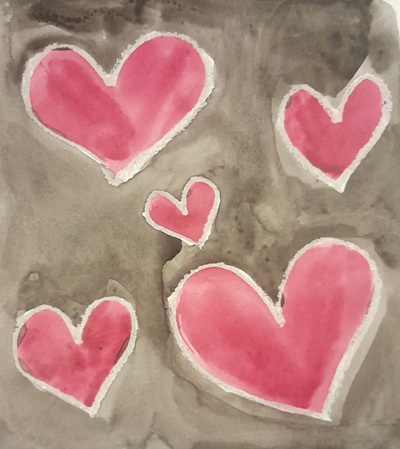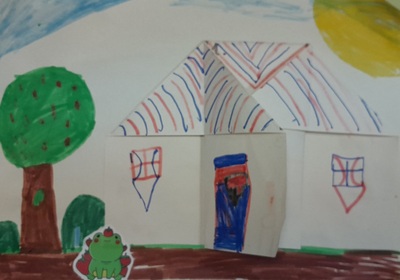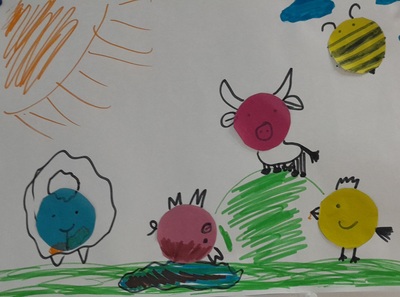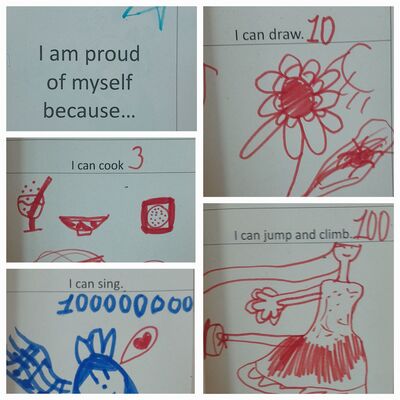
This was a week of our winter (or dare I say spring?) camp classes or, in other words, a week of alternative timetable and alternative activities at the school. It lasted four days and combined two programmes, the emotions activities organised and prepared by our school psychologist and run by the national language programme teachers AND the English language programme prepared and run by me and my colleagues.
I decided to put it together here, as an example of how a curriculum can be composed without relying on the coursebook. Our programme lasted 4 days within the same week but it equals 4 mini-modules, of two lessons each and, theoretically at least, this could amount to a month’s worth of classes and each of these could be further extended to give children an opportunity for more practice.
It needs to stressed that, because of the context of my school, none of the kids are real beginners at the moment and they have seen and used all of the structures and vocabulary before. None of them had to be properly introduced from scratch, for all of us it was a revision and that it why were could squeeze it in two lessons only.
Just as an idea, just for inspiration.

Step 1: I’m happy, I’m sad.
Vocabulary: all the emotions (the number will depend on the age and the progress of students), the phrase ‘I am happy’. We also revised the extended characters (fairy tale characters and our favourite animals) and used them to make phrases such as ‘The princess is happy’, something that we would need for all the storytelling. The main vocabulary focus for us was the ‘rooms in the house’. We introduced and practised the new vocabulary and I prepared the Magic Bag with items from different rooms in the house.
Songs: there are many songs that include emotions that can be used here, for example Hello song, Open Shut Them 2 or Feelings and Emotions Song.
Story: There are many stories that could be used here, some of them with a bit easier content but I decided to use one of my personal favourites, Rhinos Don’t Eat Pancakes by Anna Kemp which is also available on youtube. I adapted the story, simplifying it a bit and while I was doing it, I asked the kids to help me with describing the main characters’ emotions.
Follow-up: We had two lessons and two main craft activities. The first one was a house which I described a bit earlier here, the other one was creating a crazy animal from different body parts.
Evaluation: The kids really liked the story, Daisy and her purple rhino are always a hit. The house went great, too, as some kids chose to draw the entire kitchen and some just went for a basic symbol for each room in the house. I also had a whole bunch of frog stickers so the houses ended up with having at least one reptile inhabitant.
Step 2: I’m angry.
Vocabulary: The emotions and characters were a part of every lesson in these series, with teh list of characters growing longer. Apart from that, there is also a lot of potential for body parts to prepare the kids to describe all the wild things.
Songs: There are lots of body parts songs, including Head and Shoulders, but one of my favourite ones is ‘This is Me!‘
Story: I chose ‘Where the wild things are’ by Maurice Sendak also because apart from the book in our library, it is also available in the form of a youtube video.
Follow-up: For this day, I planned the music and emotions activity that I described earlier on this blog for the first lesson. In the second half of the day, after the storytelling session, the kids made their own crowns to become the Kings and Queens of the Wild Things and they played the game that I found here on the Famly Blog in which the kids would take turns to dictate the group what to do.
Evaluation: Making a crown is super easy as it only requires an A4 piece of paper cut into halves, lengthways which the kids decorate, cut out the spikes (optional) and glue together and it is amazing how much fun it can bring. Every time I made crowns in class, they were very popular among boys and among girls, too. I was especially happy that the crown would later become an accessory in our game (which, by the way, is a great bonding and team building activity as the kids can make the group perform a complex dance or just a simple gesture such as bending a finger).

Step 3: I’m fantastic, I can do it!
Vocabulary: The vocabulary input here was imposed by the story that I really wanted to use in class and this is how farm animals made an appearance in our lesson. We focused on introducing the names and practising. We did the sound quiz together and we played a simple guessing game in pairs, with a set of mini-flashcards for each pair or team. The younger and lower level students played focusing only on guessing the name of the animal and the more advanced were making simple sentences or questions to find out what their partner is talking about.
Songs: I was planning on using Old MacDonald’s but I changed my mind during the lesson and replaced it with the Eddie song that goes with the story.
Story: I have been using this story in class for about 15 years now and out of everything that you can find in Playway to English series, Eddie, the king of the garden is my absolute favourite. It is quite simple, very easy to understand but with a very powerful message.
Follow-up: In this ‘module’ we had time for only craft and I decided to revisit one of my favourite craft activities, Don’t you just love a circle, this time farm-themed.
Evaluation: The activities went well but this day at camp helped me realise that every lesson should include a craft activity, something hands-on, something that we will make and take home. I was planning to include it, initially, but then decided to abandon the idea, in order to make room for riddles and the quiz. It went well but not as well as the other days when two creative (or two paper activities) were included.

Step 4: I’m proud.
Vocabulary: I wanted to based this lesson on different activities that kids can do and those that can fill them with pride. The list was adjusted to what I expected my students to know and included the following: Reasons to be proud.
Songs: In my plans I had ‘Little bird’ that we have known for some time as well as the related game ‘Can you? Show me!‘ but, in the end, we did not have time for that. It would have been a great extension and an opportunity for practice, though.
Story: Our story lesson was based on Pip, the would be guide dog and its adventures which we followed with a video from a real school for puppies.
Follow-up: In the first lesson we made a book about being proud, with each page dedicated to a different skill. We went page by page in the following manner: read the sentence a few times, give ourselves a mark, in connection with how strong we are in the area and draw a symbol to represent the activity. In the end we stapled the pages together into a book. I loved watching my kids while they were assessing their own skills. We used the traditional scale we know from school but it was OK to extend it and that is how some kids awarded themselves with 7+ or even 100 for some skills. It was a beautiful moment.
In the second activity, we prepared diplomas that were handed in at the end of the session because everyone is fantastic and deserves five stars.
Evaluation: This was, by far, my favourite lesson of the series. One reason for it was the fact that I managed to find both videos and to balance a cartoon with a documentary on the same subject. The second reason was the fact that the lessons gave us an opportunity to talk about what we can do, to evaluate our skills and to be proud. I did underestimate the kids’ ability to draw for their friends and the ‘decorate your friend’s diploma’ did not go that well. They turned out to be too young and I should have predicted that, skip that element and focus on preparing the diplomas and handing them out on the last day of the camp. My colleague did the same activities with another group and it was a success. I did overdo it a bit. Lesson learnt.
Happy teaching!